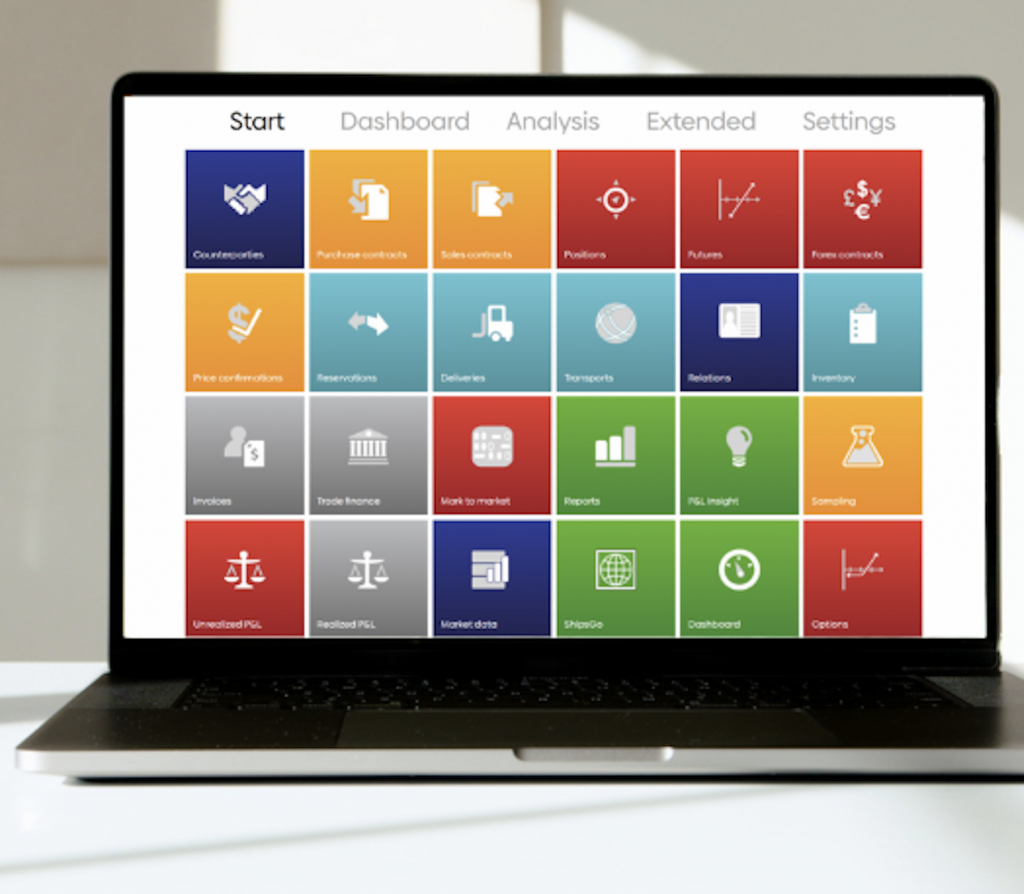As artificial intelligence is becoming more commonplace in all aspects of commodity trading, we’ve presented a short series on the benefits of AI in our industry. In the first entry, we’ve looked at ways modern commodity trading platforms can use AI in their daily decision-making processes, improving the bottom line of their business. Parts II and III focused on better price forecasting and supply chain optimization respectively. In this fourth and for now final chapter, we’ll recap some keynote aspects of the series as well as provide insight into why your organization should get on board.
Recap: AI in commodity trading
Our first installment set the stage for deeper discussions on AI’s role in price forecasting, risk detection, supply chain optimization, and technology adoption. It shows how AI is already embedded in the commodity trading industry – from smarter forecasts and algorithmic trades to risk control and end-to-end automation via platforms like Agiblocks.
AI enables predictive analytics for price trends, algorithmic trading for rapid execution, and advanced risk management through scenario simulations and real-time exposure tracking.
Better price forecasting
In the second installment, we examined how AI-powered commodity trading systems enhance price forecasting by leveraging advanced machine learning methods and rich datasets. Traditional models like linear regression are replaced with techniques such as random forests, gradient boosting, deep learning, and satellite imagery analytics to capture complex market patterns and supply‐demand dynamics. AI also employs sentiment analysis, parsing news and social media to gauge market mood and adjust forecasts. Embracing these technologies empowers traders through faster, more accurate, and more adaptive insights.
Supply chain optimization
In the third part of our series, we explored how AI transforms commodity supply chains through automation and optimization. By converting unstructured logistics and ERP data into structured insights, AI reduces manual workflows and paperwork, often comprising twothirds of operational budgets. Customized to each trader’s unique practices, the platform streamlines vessel nominations, shipment status updates, and scheduling – cutting errors and accelerating operations. This tailored AI layer complements existing CTRM tools, delivering faster integration and tangible efficiency gains for users aiming to automate logistical complexity. Which is a nice segway into our fourth and final chapter, as the real power of AI lies not only in its speed but also its ability to recognize subtle correlations between factors – like local crop yields, regional currency fluctuations, or geopolitical events – that can affect commodity prices and logistics. The reason to embrace AI as a supplement to CTRM is fundamentally tied to its capacity for making sense of large and disparate data sets. In other words, simplifying complexities – an Agiboo mission since day one.
Part IV: get on the AI train
The influence of the far-reaching digitization of our existence is just as boundless as digitization itself. Let’s look at that from a historical perspective, briefly. Once upon a time, there was an era without “time”; clocks didn’t exist, and daily life was roughly divided based on light and dark. Until someone invented the sundial to bring just a little more structure to each day. Next came the church bell, which shackled entire villages to an even firmer daily routine, and eventually the wristwatch, which – as a ticking, ever-present little referee – kept individual productivity in check (being governed by one’s technological possessions is not a uniquely 21st-century phenomenon) as well as a keen eye on daily schedules.
Progress kept barreling ahead. The plow and the compass. The microscope and the amplifier. Telecommunications and the jet plane. AI is just another rung on that ladder. But, as with all the aforementioned examples, one that helps you to move upwards.
Now, commodities companies today already rely on CTRM platforms to record transactions, manage risk positions, and optimize logistics. But most CTRM solutions, while robust, do not inherently extract predictive insights from the vast amount of data they process. AI models can sift through historical market data, trade flows, shipping times, and even weather patterns, to illuminate patterns that any human analyst would miss.
In the rapidly changing commodity trading landscape, companies that source, transport, or sell physical goods like coffee beans, cocoa, or grains and oilseeds face an increasing number of complex decisions. Market volatility, unpredictable supply chains, shifting trade regulations, and the constant demand for efficiency all put pressure on these companies to make smarter and faster decisions. CTRM software solutions are invaluable for organizing logistics, hedging exposures, and tracking inventories. But as data grows more diverse and abundant, companies cannot fully realize the potential of these systems without the additional intelligence that artificial intelligence can provide.

New horizons
When companies integrate AI into their existing CTRM systems, they gain new predictive and optimization capabilities. AI can help forecast demand by analyzing consumption trends, shipment schedules, and buyer preferences. It can anticipate price movements by detecting signals across multiple data sources, allowing traders to take positions or hedge at more advantageous levels. AI-driven optimization can improve shipping routes and logistics planning by analyzing historical port delays, weather conditions, and fuel prices, helping companies lower transportation costs and reduce carbon emissions. Even risk management can improve as AI spots hidden correlations in position reports and value-at-risk analyses, allowing companies to proactively address potential losses.
Implementing AI within a CTRM environment is not a matter of replacing existing processes but enhancing them. Modern CTRM tools will assemble data that can then be easily used by machine learning engines or third-party AI tools. A well-executed integration will take data already present in the CTRM platform and use AI to produce more refined forecasts, automated trade suggestions, and real-time alerts for risks or anomalies. Companies can then incorporate these AI-driven insights into their daily workflows, ensuring that human traders and risk managers can leverage them without disrupting their existing processes.
This also allows companies to scale their operations more effectively. Smaller teams can manage larger portfolios when much of the manual data processing is handled by algorithms. Decision-making accelerates, and companies can spend more time on strategy and relationship management rather than on data wrangling and report generation.
Beyond that, AI can help make commodity trading more sustainable. Algorithms can optimize not only for profit and risk but also for sustainability criteria like carbon footprint and ethical sourcing, helping companies meet increasingly important ESG standards.
Implementation
Implementing AI successfully requires careful planning. It requires ensuring the data within a CTRM system is accurate and accessible, choosing the right AI tools for the company’s specific goals, and training personnel to interpret AI-generated outputs properly. Companies also need to test their models and monitor them over time, adjusting them as new data or business requirements emerge. With a thoughtful and gradual rollout, however, these hurdles are manageable. When companies fold AI tools into their existing CTRM setup, they’re not replacing what already works. They’re just putting their data to better use.
AI can help traders and planners make more informed decisions without spending hours manually going over spreadsheets. It can look at historical shipments, contracts, and inventories, then suggest better shipping routes or give a heads-up when a price swing looks likely. That extra layer of insight can help trim transport costs, cut down on delays, and reduce some of the guesswork that goes into buying and selling.
That also means teams can do more with less. Instead of needing big teams to pore over numbers, a smaller group can focus on the decisions that really matter, supported by timely updates. Even risk management gets sharper because AI can catch exposures or trends in the background so they don’t sneak up and cause a nasty surprise.
This isn’t some all-or-nothing switch. Getting AI working alongside a CTRM system is mostly about making sure the data going in is good and then choosing the right tools to suit the business. Once set up, these tools can quietly do their work in the background, surfacing the kinds of updates and warnings that help everyone—from traders to logistics managers—get a clearer picture of the day’s business. The value here is practical. Whether you’re selling coffee, shipping cocoa, or buying cotton futures, making sense of your data faster and more accurately helps you act before problems grow. AI doesn’t change what commodity companies do, but it can help them do it with fewer surprises and better results.

AI and Agiblocks
AI and machine learning are not new, but what is new, is that modern technology and specifically the calculating powers of modern technology have made it possible to have a solution like AI’s computational prowess within reach. On your computer, laptop or tablet, and even in your pocket, on a smartphone.
Agiblocks offers that too. As such, Agiboo in its 4.0 software version is not ‘simply’ an update of an existing solution. It is the disruptive solution as we’ve always envisioned it. Technology has finally caught up. And that 4.0 version of our flagship CTRM solution is ready to embrace AI. Would you like to know more? Reach out to our experts or request a free demo.

